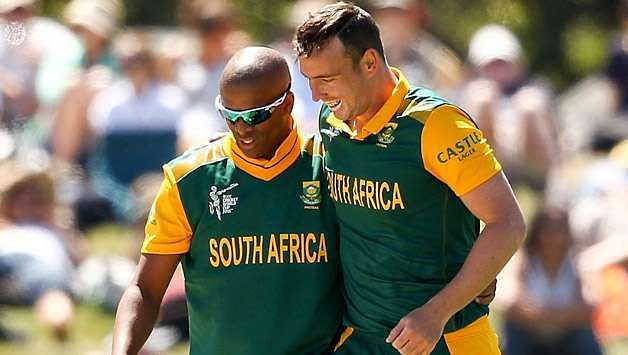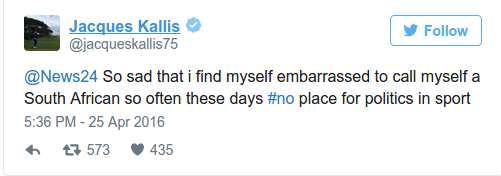
Are 'transformation targets' going to kill South African cricket?

Cricket South Africa has issued guidelines that at least four players of colour should be included in the national team, which has sparked speculation as to whether this will hinder the balance and performance of the national team.
CSA is not an islolated example; many other sport bodies in South Africa too have to follow these guidelines. As a matter of fact, owing to the slow 'transformation', the CSA will now not be able to host or even bid for any international tournaments.
Jacques Kallis has come down hard on the sports body and has said that he is ashamed of being a South African.
So what exactly is this transformation bid? In order to understand these sordid events that are unfolding, it is imperative that we cast our minds to history and to the turbulent times that South Africa as a nation has witnessed.
The scourge of Apartheid
Apartheid had ripped Africa apart, and there was deep animosity between white and black people – all because of the racial segregation that was initiated and enforced by the National Party from 1948 and 1994. This trickled down to various sports bodies and all South African teams were selected primarily on the colour of the skin, with coloured people – especially black people, given the iron fist.
Things descended to such an extent that non-white players were banned from even participating in any sporting activities.
ICC suspends South Africa
In 1970, ICC suspended South Africa from international cricket due to their apartheid rules which only allowed the team to play against white nations (England, Australia, New Zealand) and which only allowed white players to represent the team.
This move was justified in every aspect, and it led to widespread awareness of the injustices meted out to non-white players. Although many rebel tours were organised, the blanket ban levied by the International Cricket Council continued.
South Africa welcomed back
After the long struggle of Nelson Madela, South Africa finally awoke to a day when equal rights and opportunities were enjoyed by all irrespective of the colour of their skin. In 1991, the ban by ICC was lifted and South Africa was once again welcomed back to international cricket. A level playing field was then a reality and the South African team toured India on their first tour.
Now, zipping past the history, in 1994 the South African government decided to introduce the quota system in a bid to right the previous wrongs and give the deprived non-white population their due. This once again sparked a debate, and the contentious issue has never been taken by the horns – no decisive proclamation has been made in the years since.
Why the ‘transformation targets’ should go
Now we have these guidelines that 60 per cent of the players in the national team have to be coloured players, and once again we are back to square one, where teams are selected on colour instead of their abilities. The representation of black players in different teams has become a pressing issue once again. Is South Africa then witnessing reverse-apartheid now?
The South Africa cricket team has already faced the implications of this diktat. In the 2015 Cricket World Cup, Kyle Abbott was dropped and Vernon Philander was picked in the semi finals against New Zealand. By all accounts, that was a strange decision considering the form of Abbott and the fact the Vernon Philander was nursing an injury.
There were rumours that Haroon Lorgat had personally written a note to include Philander to meet the guidelines. The question then that is bound to be raised is: will these rules and regulations impede the team in the long run?
In my opinion, the national team is no place to experiment. If the officials are so serious about equal opportunities, they should focus more at the grassroot level where they can streamline opportunities catered to specific sects of population and then track their progress.
When the selection team sits down to pick a team, their only concern should be to pick players who have talent, ability and temperamant to shine at the international level. The concern about the colour of the skin should not hog all the limelight.
In the current situation, however, the colour of the skin has become the main debating point. The actual, unbiased process of team selection is taking a backseat.
South African players are never too far away from English counties (Kevin Pietersen, Jonathan Trott), and many players have become Kolpak because of lack of opportunities. This new system should worry the administrators because white players might want to shift their loyalties owing to lack of opportunities.
We should also think about the non-white players who make the cut even if they are not good enough. They are bound to get exposed at the international level; where then will their careers go?
The apartheid system rightly incited a lot of outrage, but there should be concern over the prevalent quota system as well. Equal opportunities where only talent and abilities are the driving point should be the aim. Sport should not pander to politics, and quotas will keep reminding us that cricket is nothing more than a petty tool in the hand of politicians.
